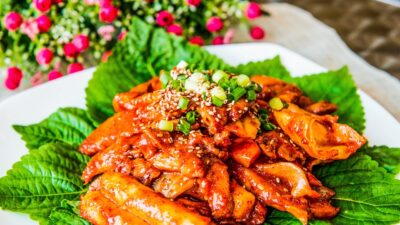Food is a universal language, a medium through which stories, traditions, and identities are transmitted across generations. In America, a nation synonymous with diversity, that language is kaleidoscopic, shaped profoundly by the myriad cultures that have contributed to its culinary landscape. The impact of immigrant cultures on American food is not merely an additive process; it is a transformation that has redefined American cuisine and continues to evolve in the 21st century.
A Melting Pot of Flavors
The phrase "melting pot" often describes the United States, reflecting how various immigrant groups have come together to create something new. This metaphor extends beautifully into the culinary world. Each wave of immigrant communities has brought with it unique flavors, ingredients, cooking methods, and traditional dishes, creating a rich tapestry of gastronomy that is uniquely American.
Early Influences
When European settlers arrived in the New World, they brought with them their culinary customs. The English, French, and Spanish introduced staples like bread, dairy, and meats. However, it was the indigenous peoples who significantly influenced early American cuisine, introducing ingredients such as corn, squash, and beans—what are often referred to as the "Three Sisters."
As different waves of immigrants came, the culinary scene expanded dramatically. Italian immigrants, for instance, introduced tomatoes, garlic, and olive oil, paving the way for iconic dishes like spaghetti marinara. Similarly, the Irish brought potatoes, which would become a staple in the American diet. As these flavors intermingled, they evolved, adapting to local tastes and available ingredients.
The Flavors of the World
In the late 19th and early 20th centuries, the American culinary landscape began to shift significantly with the arrival of immigrants from Asia, Africa, and Latin America. Each group contributed distinctive flavors and techniques, enriching American cuisine in ways that are often celebrated today.
-
Asian Cuisine: Chinese immigrants introduced stir-frying, soy sauce, and a range of vegetables like bok choy and shiitake mushrooms. Dishes like chop suey and later, the popularity of sushi, highlight how these flavors have found their way into American cuisine and dining culture.
-
Mexican Cuisine: Mexican flavors have become an integral part of the American culinary fabric. Tacos, enchiladas, and guacamole have not only become staples in American kitchens but have also been embraced in a wide variety of fusion dishes, showcasing the adaptability of Mexican ingredients like cilantro, lime, and avocados.
- African American Influence: The culinary contributions of African Americans, particularly in Southern cuisine, cannot be overstated. Dishes like gumbo and jambalaya reflect the blending of African, Caribbean, and European influences. Ingredients like okra, collard greens, and black-eyed peas offer insights into the resilience and creativity of enslaved chefs who made the most of what they could access.
Modern Fusion Trends
In contemporary times, the concept of fusion cuisine has become a trend whereby chefs blend elements from different culinary traditions, often leading to innovative dishes that defy traditional categorization. For example, Korean barbecue tacos and Japanese-inspired burgers reflect a growing trend among younger generations who are eager to explore food boundaries.
Social media and the global marketplace have facilitated the rapid sharing and adaptation of cultural dishes. Home cooks can now access traditional recipes from around the world with just a click, encouraging a greater appreciation for global flavors and cooking techniques.
Impact on Identity and Community
Food also plays a crucial role in shaping identity and community among immigrant populations. Recipes passed down through generations often serve as cultural touchstones, allowing individuals to connect with their heritage while also contributing to a broader American identity. Community events centered around food, such as potlucks or festivals, celebrate this diversity and foster a sense of belonging.
Moreover, restaurants run by immigrant families often serve as cultural hubs, offering a taste of home while introducing locals to new flavors and culinary traditions. These establishments not only contribute to the local economy but also encourage cross-cultural dialogue and understanding.
Conclusion
The influence of immigrant cultures on American food is a testament to the country’s diversity and capacity for adaptation. As we savor dishes that carry the essence of far-flung regions, we are reminded of the rich histories and narratives behind them. Each bite reflects the interplay of cultures, the resilience of community, and the celebration of heritage on a plate. In exploring these culinary traditions, we not only nourish our bodies but also our minds, fostering a deeper appreciation for the beautiful mosaic that is American cuisine.



